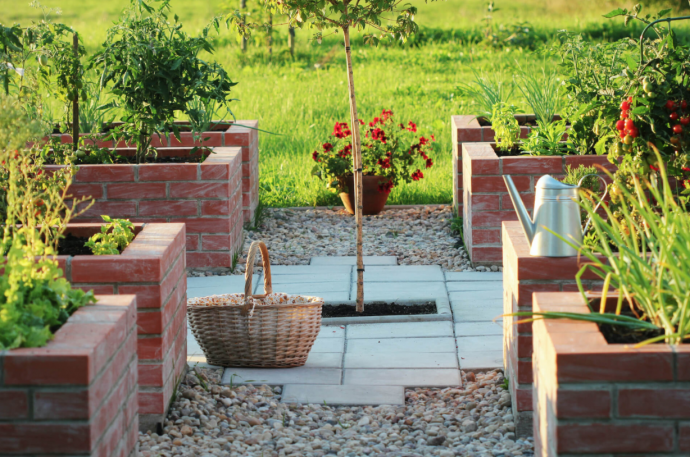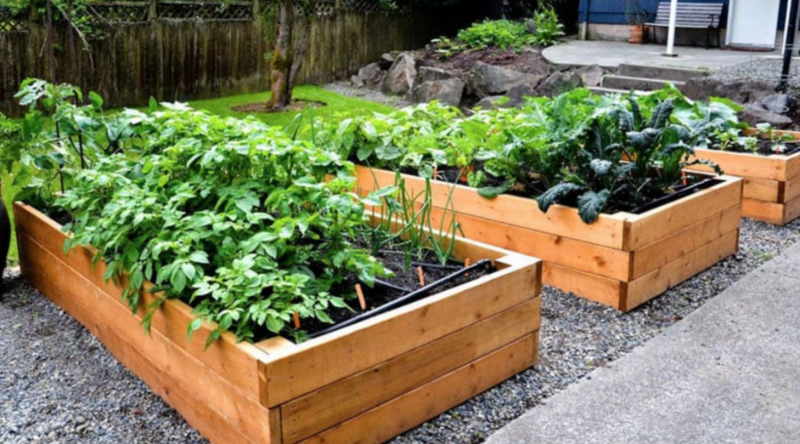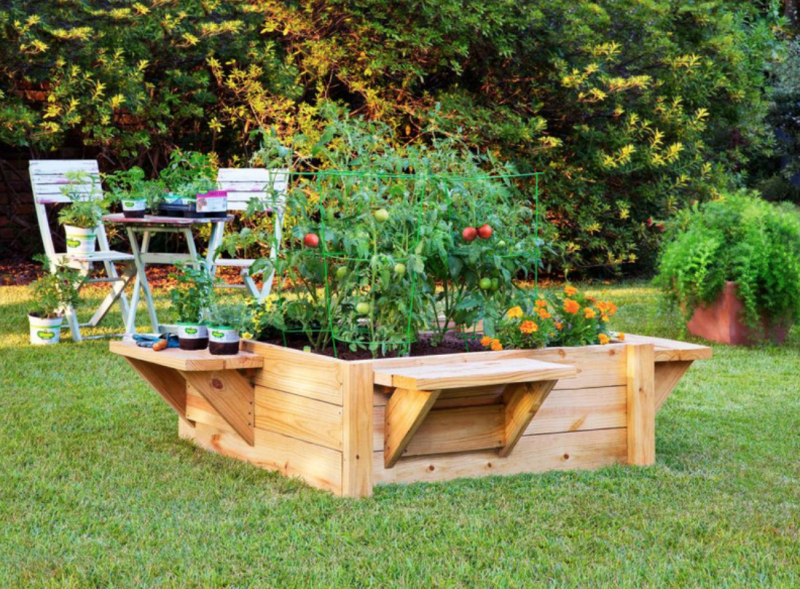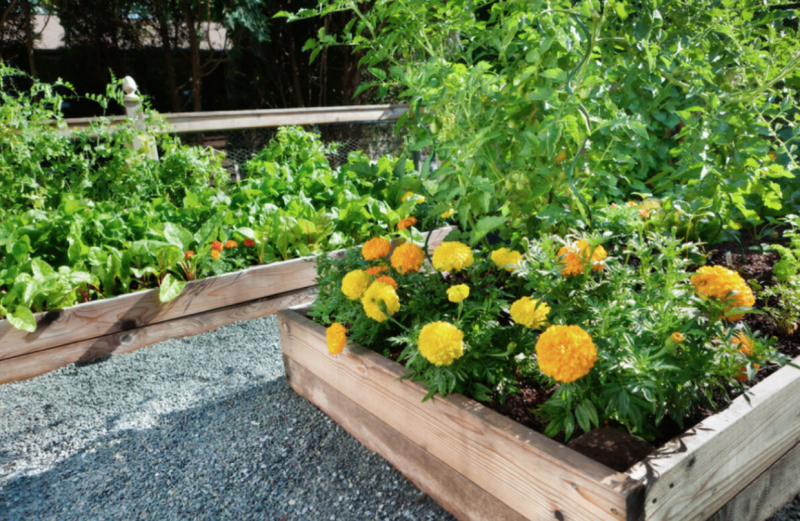How To Build A Raised Bed

Raised garden beds, also called garden boxes, are great for growing small plots of veggies and flowers. They keep pathway weeds from your garden soil, prevent soil compaction, provide good drainage and serve as a barrier to pests. Raised bed gardening takes very little space and allows vegetables & flowers to be grown closer together. It's also a great solution for areas with poor native soil. Discover how to make the best use of your raised beds, and learn how to build a cheap and easy DIY raised garden bed (everyday items only; no power tools required). You can maximize your backyard garden space, gain better control over the soil, reduce soil compaction and care for your plants easier.

Benefits of Raised Garden Beds
Raised garden beds are excellent long term investments that provide gardeners with a multitude of benefits. They give the gardeners some great benefits, lessening the need for bending, weeding, and they even provide the ideal warm and fertile environment for root systems to thrive for better growth.
- Space Efficiency: Raised beds are fantastic for gardeners with limited garden space. Raised beds can be built on top of undesirable growing areas with minimal effort.
- Enhanced Soil: You can control the soil quality in your raised garden beds as opposed to working with your ground soil which can be more difficult to amend.
- Maximized Harvest: Growing more plants with less space is a benefit of raised garden beds. Companion planting in raised beds allows you to grow plants in the shade of other plants, up to climbing structures and spilling over the sides.
- Weed Control: Raised garden beds can be constructed over the top of grassy areas. You can lay a foundation of cardboard over most surfaces like grass. If you put down cardboard and newspaper, then your soil, and top it with cardboard and mulch, you can significantly cut down on those pesky weeds.
- Counteracts Pests: Raised beds can also help control pests that plague garden beds. Raised garden beds are built above the ground, which can ward off pests that thrive in the ground and seek to munch on your crops. You can easily cover your beds and also prevent tunneling garden critters from devastating your crops.
- Less Work: Gardening in raised garden beds, especially those elevated off of the ground, makes for less arduous work such as bending, weeding, watering, and harvesting.

What to Grow
Almost any type of vegetables can be grown in raised beds, though most gardeners limit their raised beds to annuals only. Annual vegetables include most of the top crops for vegetable gardening, such as:
- Tomatoes
- Peppers
- Squash and Melons
- Cucumbers
- Beans and Peas
- Onions
- Eggplant
- Root crops like beets and carrots
- Potatoes and sweet potatoes in deep beds

How to build a raised bed
Do you want an organic raised garden bed that does not rely on chemically treated wood and is as easy to remove as it is to build? No worries! Simply hack a raised bed with old fencing, straw, and your favorite soil mix.
The first step is finding a raised bed site location. Have the soil tested below the bed to determine if your raised bed garden should be planted with or without a ground barrier. Additional concerns for a barrier might be considered if you are worried about ground rodents. For instance, if you have gophers or moles in your planting area, it might be beneficial to put your soil in after adding a layer of hardware cloth.
Supplies needed
2. You will be creating a round garden. Determine what the diameter of the garden will be. Drive a stake in the ground in the precise center of your planned raised bed garden site.
3. Tie a rope the length of the radius to the stake and use it as a trammel and lay out the circle. Mark the circle’s perimeter with a garden hose.
4. Use a hoe or shovel to dig a narrow trench around the perimeter and remove grass and weeds that might be inside the perimeter.
5. Bury the fencing so 6 to 8 inches of fence projects above ground.
6. Rake the soil in the bed site, so it is flat and level.
7. Install optional hardware cloth, using wire cutters to custom-fit the cloth to the space.
8. Line the inside of the fencing with loose straw or grass clippings, back fill with planting soil to help hold the straw up along the fencing.
9. Fill the raised garden bed with organic soil to just below the top of the fence. An excellent homemade soil mix is 1 part organic potting soil with worm castings, 1 part organic rotted composted manure, and 1 part plain compost or leaf mold.
10. Rake the soil flat.
11. Plant the garden.
This raised bed gardening hack is perfect if you have some old straw or grass clippings and a bit of garden fencing left from a previous project. Because the sides of the raised beds are open, it is possible for the roots to get more aeration. You gain a temporary seasonal garden that is easy to clean up at the end of the growing year.
